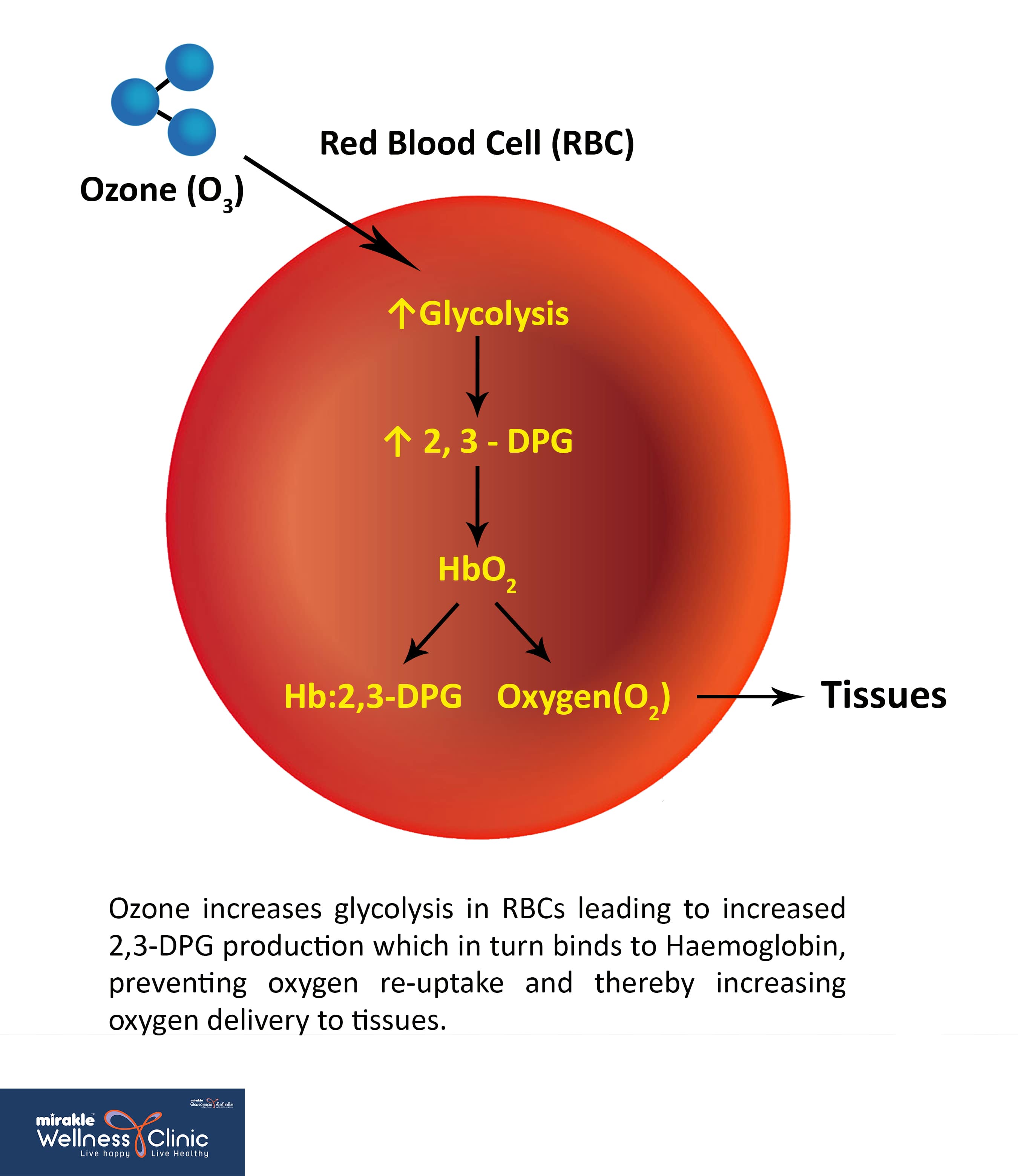
Please Wait...

Please Wait...
What is Ozone?
O3 is a highly water-soluble inorganic molecule composed of three oxygen molecules. Being a highly unstable molecule, it breaks down into Oxygen (O2) and Nascent Oxygen [O] within minutes. Ozone therapy has been utilized and heavily studied for more than a century. Its effects are proven, consistent, safe and with minimal and preventable side effects.
History
Ozone therapy has been in use since the 1800s and in 1896 the genius Nikola Tesla patented the first O3 generator in the US, later forming the “Tesla Ozone Company.” During the First World War (1914-18) doctors familiar with O3's antibacterial properties applied it topically to infected wounds and discovered O3 not only cleared any infection, but that it also improved blood flow and reduced inflammation. Ozone Therapy is currently being practised in over 50 countries around the world including India, Germany, Spain, Italy, Russia, America, Cuba, several South American and South Asian countries.
How does Ozone Therapy help in Heart Disease?
Increased Oxygen Delivery to tissues:

Patients with heart disease experience tightness in the chest, angina, breathing difficulty because of reduced oxygen supply to the heart.
Medical Ozone Therapy, by increasing the concentration of 2, 3 – Diphosphoglycerate (2,3-DPG) in red blood cells, causes more oxygen to be delivered to the heart and other tissues.
In circulatory disease, a clumping of red blood cells makes it difficult for the blood to flow through the small capillaries and decreases blood flow to vital organs. With Medical Ozone Therapy, the RBCs become more flexible (improved rheological properties) and can squeeze through even the tiniest of blood vessels and also, clumping of red blood cells is prevented.
Ozone Therapy also stimulates the production of Prostacyclin and Nitric Oxide in blood vessels. This causes the blood vessel to dilate and prevent platelet aggregation.
The combined effects of improved oxygen release to tissues, improved flexibility of RBCs and dilatation of blood vessels provides increased benefit to patients suffering from circulatory disorders like coronary artery disease, heart failure, peripheral vascular disease, diabetic neuropathy, etc.
Anti-Oxidant and Anti-Inflammatory Activity:
One of the most important root causes of heart disease is chronic inflammation and free radical damage to the blood vessels leading to the formation of an atherosclerotic plaque (which blocks the normal blood flow).
Ozone Therapy, by inducing mild oxidative stress, stimulates the production of anti-oxidant enzymes in our body. These anti-oxidants can scavenge the free radicals and prevent them from causing damage to the blood vessels. Ozone Therapy also decreases the formation of pro-inflammatory cytokines (IL-1, IL-6, TNF-alpha) in our body leading to a reduction in inflammation.
Mode of delivery:
I. Major Auto-hemotherapy (MAHT):
In this procedure, 200ml of blood is withdrawn under sterile conditions into a special glass container, mixed with an equal volume of Ozone-Oxygen mixture and then infused back. The procedure takes about 60 minutes. A chelating agent can be added to the Ozonated blood and can be re-infused as a combined “Chezone” Procedure.